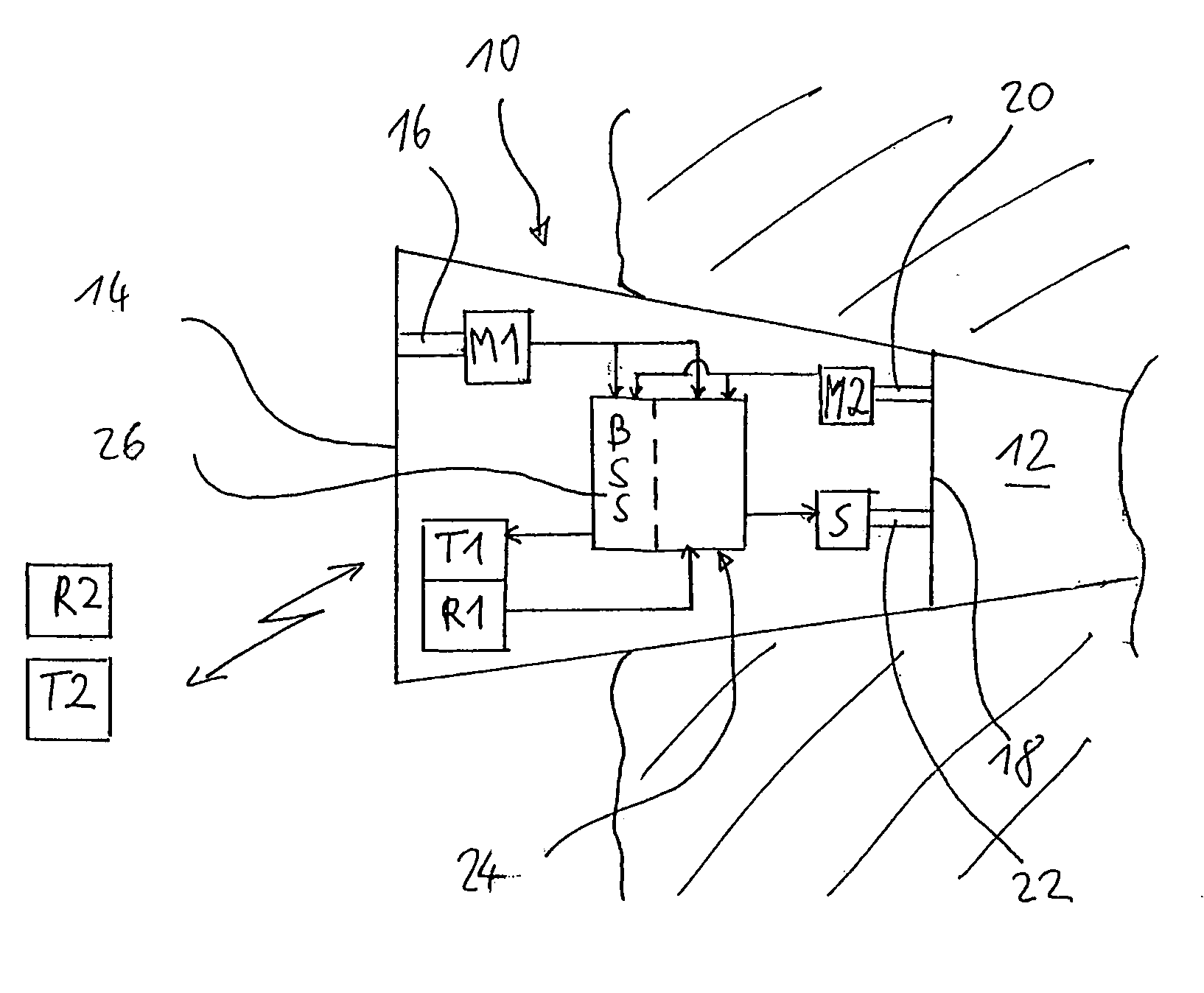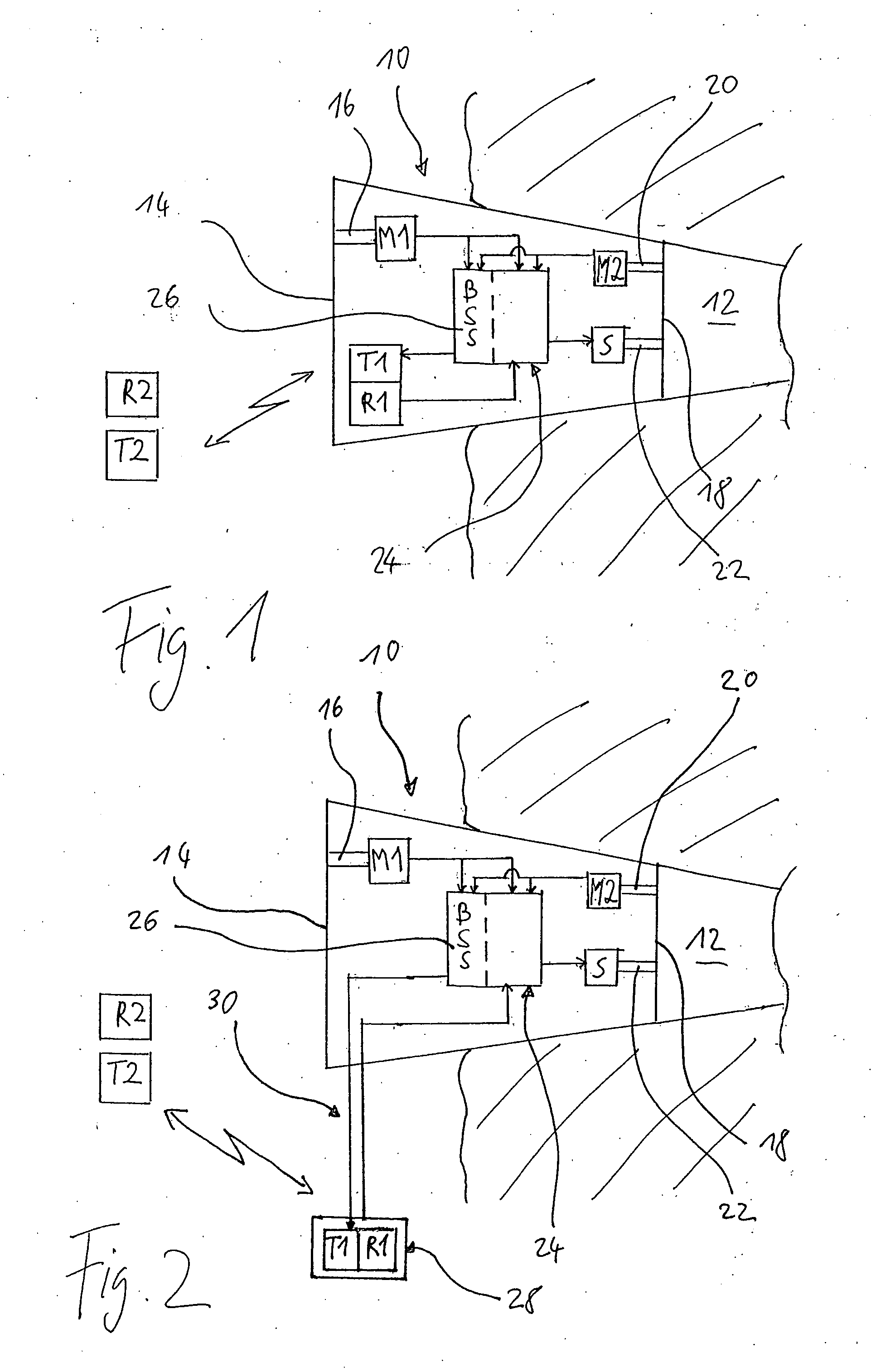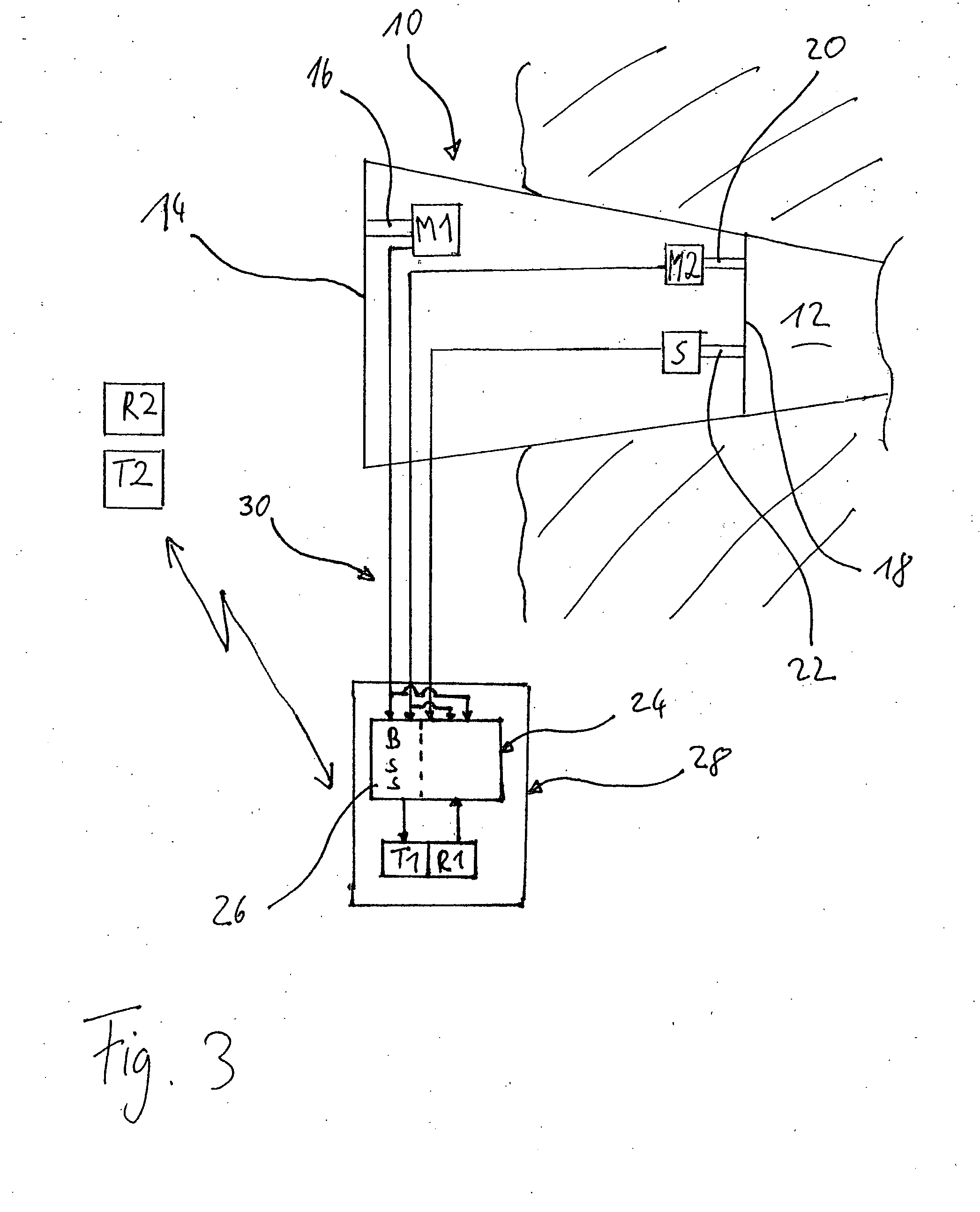System and method for separation of a user's voice from ambient sound
a technology of ambient sound and system, applied in the field of system and a method for separation of users' voices from ambient sound, can solve the problems of limiting the freedom of movement of users, affecting the stability and hence the attenuation of hearing protection devices, and limited audio bandwidth, so as to reduce costs, increase power, and increase space
- Summary
- Abstract
- Description
- Claims
- Application Information
AI Technical Summary
Benefits of technology
Problems solved by technology
Method used
Image
Examples
Embodiment Construction
[0033] The system of FIG. 1 comprises a hearing protection earplug 10 which may have a hard shell with an elasticity from shore D85 to shore D65, which is customized, i.e. it has an outer shape according to the individual measured inner shape of the user's outer ear and ear canal. The hard shell may be manufactured by layer-by-layer laser sintering of a powder material, for example, polyamide powder, or by laser stereo-lithography or photo-polymerization. An overview regarding such additive layer-by-layer build-up processes for manufacturing customized shells of hearing devices can be found, for example, in US 2003 / 0133583 A1 or U.S. Pat. No. 6,533,062 B1. The inner shape of the person's ear canal and outer ear can be measured, for example, by taking an impression which then undergoes laser scanning or by direct laser scanning of the ear.
[0034] Preferably the hard shell is designed such that it provides for an acoustic attenuation, averaged over the audible frequency range, of at l...
PUM
 Login to View More
Login to View More Abstract
Description
Claims
Application Information
 Login to View More
Login to View More - R&D
- Intellectual Property
- Life Sciences
- Materials
- Tech Scout
- Unparalleled Data Quality
- Higher Quality Content
- 60% Fewer Hallucinations
Browse by: Latest US Patents, China's latest patents, Technical Efficacy Thesaurus, Application Domain, Technology Topic, Popular Technical Reports.
© 2025 PatSnap. All rights reserved.Legal|Privacy policy|Modern Slavery Act Transparency Statement|Sitemap|About US| Contact US: help@patsnap.com



